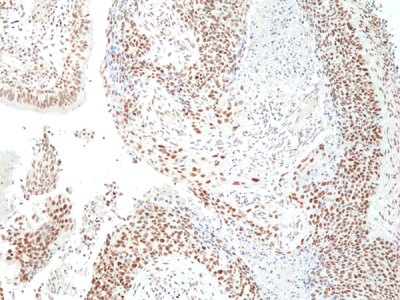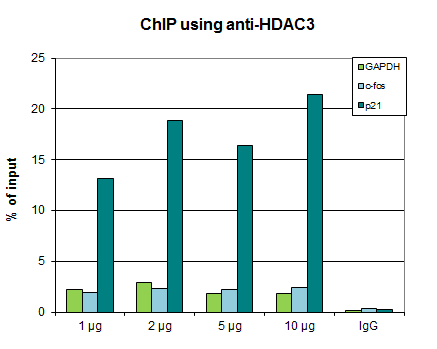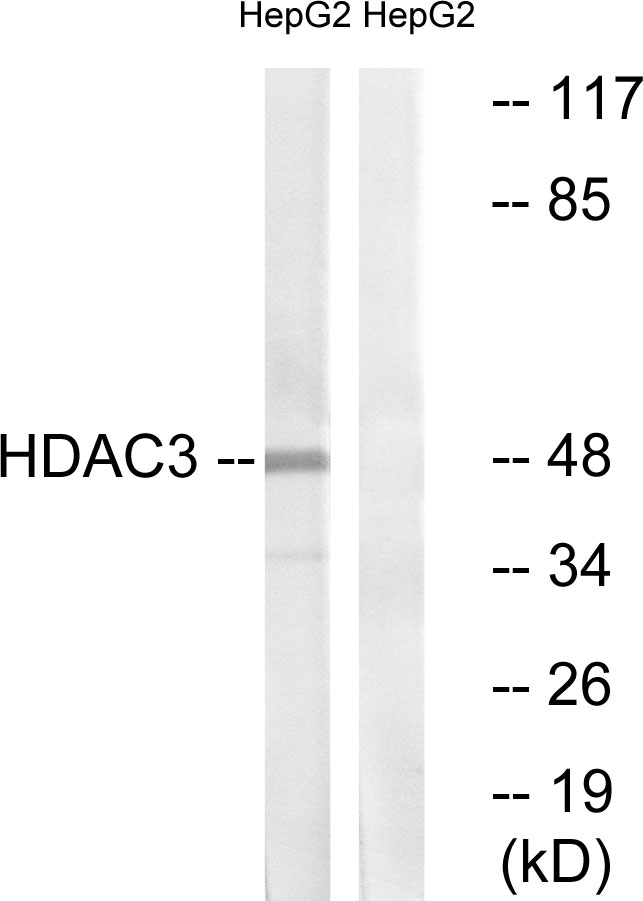
anti-HDAC3 (human), Rabbit Monoclonal (RM439)
REV-31-1330-00
ApplicationsWestern Blot, ImmunoHistoChemistry
Product group Antibodies
ReactivityHuman
TargetHDAC3
Overview
- SupplierRevMAb Biosciences
- Product Nameanti-HDAC3 (human), Rabbit Monoclonal (RM439)
- Delivery Days Customer10
- ApplicationsWestern Blot, ImmunoHistoChemistry
- CertificationResearch Use Only
- ClonalityMonoclonal
- Clone IDRM439
- Gene ID8841
- Target nameHDAC3
- Target descriptionhistone deacetylase 3
- Target synonymsHD3, KDAC3, RPD3, RPD3-2, histone deacetylase 3, SMAP45, protein deacetylase HDAC3, protein deacylase HDAC3
- HostRabbit
- IsotypeIgG
- Protein IDO15379
- Protein NameHistone deacetylase 3
- Scientific DescriptionHDAC3 is a histone deacetylase and is responsible for the deacetylation of lysine residues on core histones and other histone substrates. The deacetylation of histones is important for transcriptional regulation, cell cycle progression and other developmental related functions. HDAC3 represses gene expression by participating in the transcriptional repressor activity of BCL6, by deacetylating H3K27 on enhancer elements. It is also thought to participate in transcriptional regulation through binding to YY1, a zinc-finger transcription factor. This protein can also down-regulate p53 function and thus modulate cell growth and apoptosis. The HDAC3 gene is regarded as a potential tumor suppressor gene. - Recombinant Antibody. This antibody reacts to human HDAC3. Apllication: IHC, WB. Liquid. 50% Glycerol/PBS with 1% BSA and 0.09% sodium azide. HDAC3 is a histone deacetylase and is responsible for the deacetylation of lysine residues on core histones and other histone substrates. The deacetylation of histones is important for transcriptional regulation, cell cycle progression and other developmental related functions. HDAC3 represses gene expression by participating in the transcriptional repressor activity of BCL6, by deacetylating H3K27 on enhancer elements. It is also thought to participate in transcriptional regulation through binding to YY1, a zinc-finger transcription factor. This protein can also down-regulate p53 function and thus modulate cell growth and apoptosis. The HDAC3 gene is regarded as a potential tumor suppressor gene.
- ReactivityHuman
- Storage Instruction-20°C
- UNSPSC12352203






